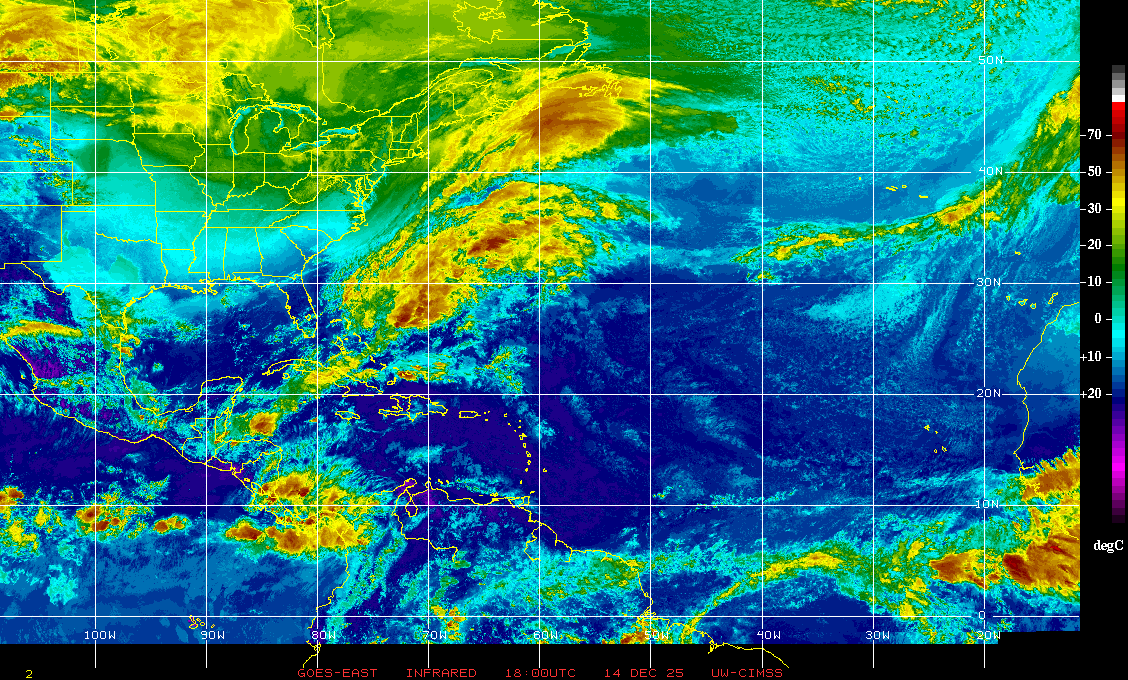Jacksonville, Fl. — The “Buresh Bottom Line”: Always be prepared!.....First Alert Hurricane Survival Guide... City of Jacksonville Preparedness Guide... Georgia Hurricane Guide.
STAY INFORMED: Get the * FREE * First Alert Weather app
FREE NEWS UPDATES, ALERTS: Action News Jax app for Apple | For Android
WATCH “Talking & Tracking the Tropics: The Science Behind the Season”
WATCH “Preparing for the Storm”
READ the First Alert Hurricane Center “Survival Guide”
Tropical depression #5 was upgraded to tropical storm Edouard Sun. night but already has lost its tropical characteristics over the N. Atlantic while speeding to the NE. It’s the third named storm this season to last 24 hours or less.
Edouard makes 2020 the fastest (July 5) known season in which to reach the ‘E’ name in the satellite era (since 1966) beating the 2005 season. However, the ’05 season had already been far more impactful even though ‘E'/”Emily” wasn’t reached until July 12th. Emily became the most intense - Cat. 5 - hurricane in the Atlantic Basin before Aug. before slamming into Mexico. Prior to Emily, “Dennis” one week before was the strongest (Cat. 4) pre-August hurricane in the Atlantic before rolling into the W. Fl. Panhandle. Cat. 1 hurricane “Cindy” hit SE Louisiana in early July as Dennis was forming. In June... tropical storm Bret hit Mexico & tropical storm Arlene had hit the Fl. Panhandle. (the’ 05 season went on the produce major hurricanes Katrina, Rita & Wilma.)
Meanwhile... weak upper level trough of low pressure/cut-off low continues over the Southeast U.S. which has helped develop weak low pressure that’s now well inland over Georgia. There’s some chance of tropical development with the low this week... perhaps just off the U.S. east coast but likely a fair distance north of Jacksonville so any local impacts would be minimal. At the moment... current indications are the low will just hug the eastern seaboard. If so, land interaction would likely limit overall development. Very heavy rain will occur along the coast from Ga. to Chesapeake Bay through much of this week.
There will also be heavy rain at times over the next several days for Jacksonville/NE Fl./SE Ga.



And what was an active tropical wave - at a pretty far southern latitude - has moved into the S.E. Caribbean.
Shear & dry air is limiting development. This wave is something to keep an eye on once in the Western Caribbean &/or Gulf of Mexico though no long range models at this time are indicating much.
Another tropical wave is moving west over the Eastern Atlantic with no organization at the moment.
Meanwhile... the Saharan dust (4th image below) remains dominant over a good part of the Central & E. Atlantic.
The recent dust “activity” - perhaps the most extensive in years a couple of weeks ago - as a whole is quite typical for June & July & is indicative of generally dry mid & upper level air which can often times inhibit tropical development. However, I’ve seen tropical systems thrive just outside the dust cloud ... or once away from the dusty atmosphere (see 2004)... so it’s not a “shoe in” that there will be no tropical development just because a lot of dust exists (see Dolly last week & Dorian last year). Other factors have to be considered such as the overall shear values across the Atlantic Basin, general vertical motion values & sea surface temps. which are nowhere near their seasonal peak yet.
Bottom line: we have a long ways to go (5 months) yet in the hurricane season with plenty of time to see the active basin we are anticipating.


:quality(70)/cloudfront-us-east-1.images.arcpublishing.com/cmg/WW5AJL3ARQUGDQMAQUNSFX4CLE.jpg)



















:quality(70)/d1hfln2sfez66z.cloudfront.net/04-30-2024/t_da09d5694185468fac2c58fbf67084b2_name_file_960x540_1200_v3_1_.jpg)
:quality(70)/cloudfront-us-east-1.images.arcpublishing.com/cmg/M36677BU5NDJZIF3MKBUGESAHU.jpg)
:quality(70)/cloudfront-us-east-1.images.arcpublishing.com/cmg/YNYHQR4LBVFI3OJGCFF32OEDVM.png)
:quality(70)/cloudfront-us-east-1.images.arcpublishing.com/cmg/TIA4QAE7MNGFJD2GWC6S5VMB7M.jpg)
:quality(70)/cloudfront-us-east-1.images.arcpublishing.com/cmg/AD66IT3DXJFRLMNHO4BV6J4ENI.jpg)